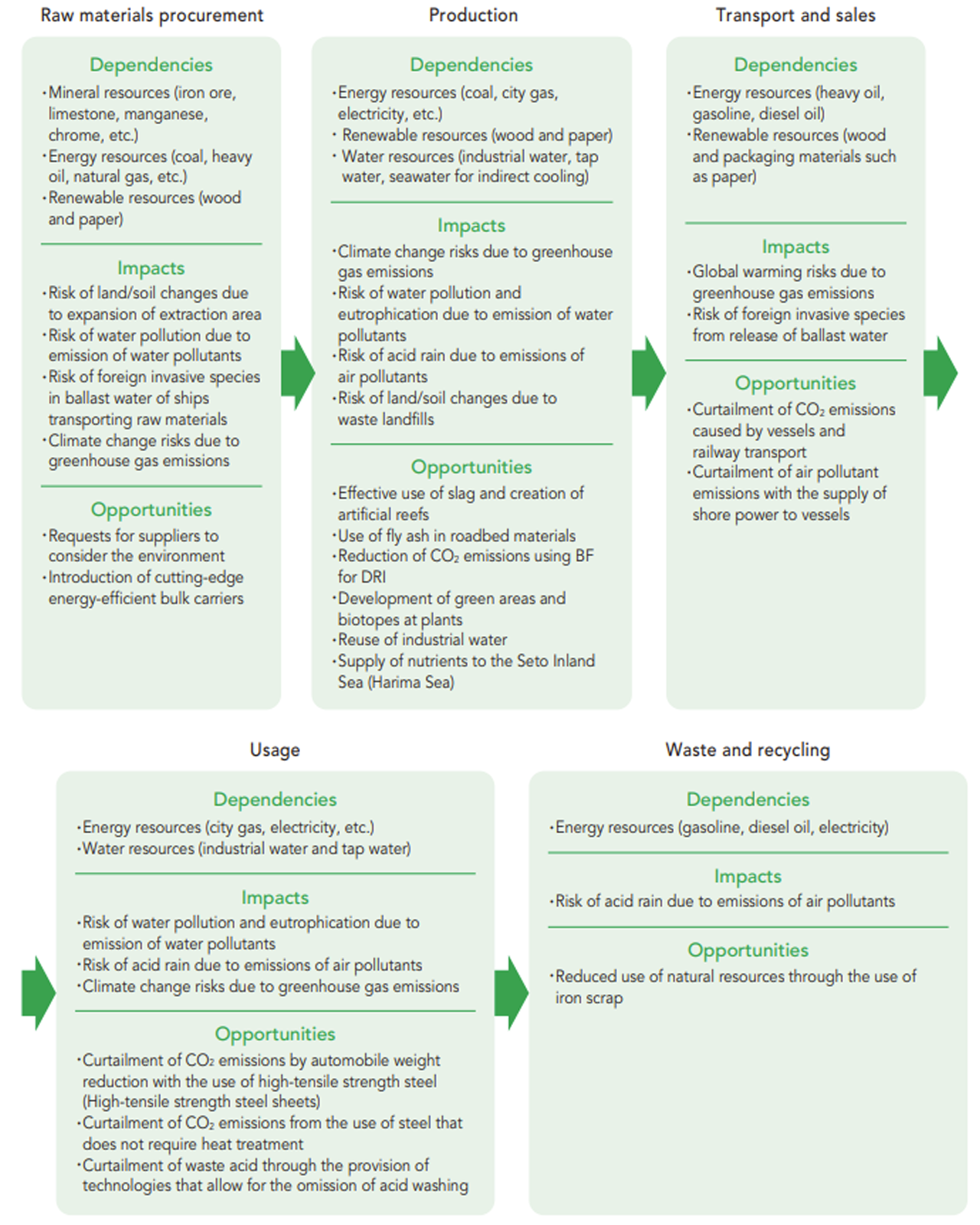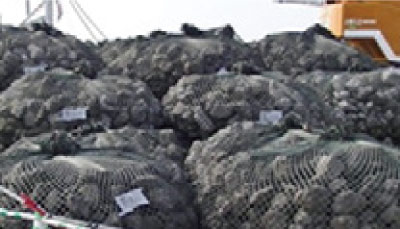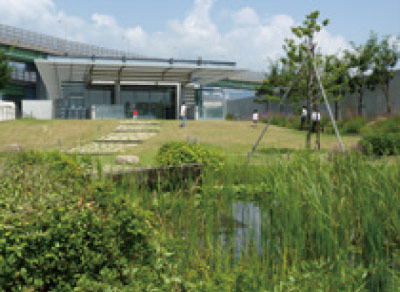Recognizing that protecting biodiversity and the rich ecosystems of the earth is an important theme of our environmental activities, we formulated the Kobelco Biodiversity Guidelines in December 2010, under which were are working to conserve and contribute to biodiversity
We recognize the importance of preserving biodiversity and will carry out activities accordingly based on the following guidelines.
In addition, as a member of the Keidanren (Japan Business Federation), we endorse the Declaration of Biodiversity by Keidanren and Action Policy, which were revised in October 2018.
We established a biodiversity response team under the Environmental Management and Disaster Prevention Subcommittee, which examines risks and contributions related to biodiversity. The team’s findings are reported to the Executive Council through the Sustainability Management Committee.
We used IBAT1 to evaluate the potential impacts that operations of the Group’s production sites have on regions important to preserving the biodiversity of the surrounding area.
The results confirmed that there are no protected natural areas (including wetlands registered under the Ramsar Convention, UNESCO natural world heritage sites, or sites under IUCN2 protected area categories 1a [strict nature reserve] to 3 [natural monument or feature]) within a three kilometer radius of our production sites.
1 Integrated Biodiversity Assessment Tool: A tool that can access basic data and the latest information on nature conservation
2 International Union for Conservation of Nature
The Keidanren and the Keidanren Committee on Nature Conservation have formulated the Declaration of Biodiversity by Keidanren and Action Policy, with the aim of creating a sustainable society by building a society in harmony with nature. Kobe Steel, Ltd. endorsed the declaration in December 2019.
We utilize the Business & Biodiversity Interrelationship Map® developed by JBIB3 to organize the Group’s business activities and associated impacts and contributions to biodiversity.
The Group’s business activities are wide-ranging, including materials, machinery, and power, and the relationship between biodiversity in the Steel Business, which is our core business, is shown on the following page. We recognize that the Group’s business activities, from raw materials procurement to manufacturing and disposal, may have an impact on biodiversity. Based on this, we will engage in activities that benefit the conservation of biodiversity.
3 Japan Business Initiative for Biodiversity

To mitigate impacts on biodiversity, such as changes in ecosystems brought about by climate change, we have created a roadmap for reducing CO2 in the steelmaking process and electric power business aiming for carbon neutrality by 2050, and we are now carrying out activities under this roadmap.
To lower our dependence on water resources, we are working to reduce our use of water in production processes by optimizing water use, and by reusing and recycling water. Our goal is to maintain a water recycling rate of at least 95%.
We also set targets for water pollution load including COD and total phosphorus targeting our business sites located in enclosed coastal sea areas with wastewater risks.
To make effective use of limited resources, we have implemented measures to control waste. Along with these, we are working to add value to by-products created during manufacturing processes, develop and introduce new applications of materials, and actively pursue recycling.
We have set the fiscal 2025 target of achieving a recycling rate of 99% for major by-products (slag, dust, and sludge) resulting from our production activities
We used IBAT to assess the possibility that operations at major iron ore and coal mines, among our suppliers of raw materials, could affect important points in biodiversity conservation of the surrounding area. As a result, we confirmed that none of the major mines of suppliers are located inside any area falling under IUCN protected area categories 1a (strict nature reserve) to 3 (natural monument or feature).
We also explain to our business partners our Group’s approach to production activities that consider biodiversity, such as preventing overexploitation of resources, encompassing our suppliers of raw materials and ask them to take action.

Steel slag has earned a favorable reputation from fishery operators, since demonstration testing has shown it to be effective in the restoration of the marine environment, including seaweed flourishing. As a result, iron and steel slag hydrated matrix was adopted as a material for the construction of submerged breakwaters in the Suma district. Going forward, we will continue to promote the use of steel slag products as materials for marine and port construction, taking advantage of our experience in using these products to improve marine environments.
The MIDREX® Process, a proprietary technology of the Group, is a technology using direct reduction with natural gas to obtain direct reduced iron (DRI) without melting the raw ore. In combination with an electric furnace, the MIDREX® Process makes it possible to produce steel with 20 to 40% less CO2 emissions compared to the conventional BF-EAF method, contributing to the reduction of CO2 emissions in the steel industry. Furthermore, we have developed a process that uses hydrogen instead of natural gas (MIDREX H2TM), which contributes to significant reductions in CO2 emissions.
The Engineering Business aims to reduce CO2 emissions mainly in plant design related to public works
For example, it generates biogas at sewage treatment plants, replaces fossil fuels by turning sewage into peat, and engages in wood biomass power generation.
The Machinery Business sells compressors for ship engines that use LNG as fuel, contributing to the reduction of ship CO2 emissions.
Compressors are said to account for about 25% of the electricity used in factories in Japan. By supplying our customers with standard air compressors with world-class energy-saving performance, it is contributing to the reduction of CO2 emissions around the world.
The Electric Power Business contributes to the reduction of CO2 emissions and air pollution associated with fuel use on ships by supplying shore power to vessels at anchor.
In addition, it supplies steam to sake breweries and other neighboring companies in Kobe, contributing to energy conservation and reduction of CO2 emissions in the local community.
In terms of fuel transportation, it introduced coal bulk carriers with low environmental impact in 2021.
The Welding Business contributes to the realization of a carbon-neutral society by developing automatic welding systems for LNG fuel tanks and new welding methods for offshore wind power generation.
In addition, from the viewpoint of reducing environmental impact, it has developed SE Wire, which are non-copper coated solid wires. SE Wire helps reduce environmental impacts by omitting the copper plating process, and also contributes to the improvement of the welding work environment by reducing the amount of spatter and fumes generated during welding.
In addition, it is striving to make effective use of packaging resources, to recover and reuse them by increasing the capacity of wire packaging forms for welding, and to use recycled raw materials for plastic spools.
The Aluminum Business strives to recycle aluminum scrap, using it as a raw material in the manufacturing of aluminum products. In addition, it is promoting resource conservation by developing technology to extract aluminum from aluminum dross, which is generated as a by-product during manufacturing.
While water quality has improved in the Seto Inland Sea around Hyogo Prefecture (Harima Sea) due to wastewater regulations, the discoloration of seaweed and the decrease in fish catch have become serious issues. In response to this situation, the Act on Special Measures concerning Conservation of the Environment of the Seto Inland Sea was revised, and in 2022, Hyogo Prefecture formulated its Nutrient Management Plan. Under this plan, Kakogawa Works has been selected as a “nutrient increase action implementer (nitrogen),” and will contribute to the creation of a vibrant ocean by operating in accordance with the plan.

At Nadahama Science Square (Nada Ward, Kobe City), which is a facility for communication with local residents, we set up biotope and grow Sanguisorba tenuifolia, Pulsatilla cernua, which are rare flora registered in Hyogo Prefecture’s Red Data Book for 2020, along with chrysanthemum, etc. We work to preserve biodiversity and regularly hold nature observation events for local children through our association with NPO Rokko Nature Learning and specialists. (In fiscal 2020 to 2022, we canceled the event to prevent the spread of COVID-19, but we restarted it in fiscal 2023.)
We will preserve the biotope and contribute to the maintenance of a rich ecosystem.
As an environmental and social contribution activity, we promote forest development activities that contribute to the conservation and promotion of biodiversity, as well as the Kobelco Forest Fairy Tale Prize, which nurtures children’s love for nature, and environmental education outreach activities at children’s centers.
Since 2011, we have been carrying out forest development activities at two locations (approx. 5.6ha) in Hyogo Prefecture led by employee volunteers.
At the Kobelco Forest in Miki City (4.7ha), we participate in the Corporate Forest Creation Project promoted by Hyogoken Ryokka Suishin Kyokai (Public Interest Incorporated Association) and help with activities at the Hyogo Prefectural Mikiyama Forest Park to create more abundant forests
At the ECOWAY Forest in Kobe’s Nada Ward (0.9ha), we participate in the Ministry of Land, Infrastructure, Transport and Tourism’s Rokko Mountain Range Greenbelt Development Project to help prevent landslide disasters, to preserve and nurture diversity in ecosystems and species, and to promote better urban environments and scenic views. These activities are led by the NPO Rokko Nature Learning and specialists. Specific activities include forest thinning, underbrush clearing, and tree planting to develop a forest comprised of trees of various ages and species, which helps to preserve and promote biodiversity.